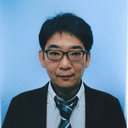[Nakajo-Nishimura syndrome].
Ključne besede
Povzetek
Nakajo-Nishimura syndrome (NNS) (MIM256040, ORPHA2615) is a distinct inherited inflammatory and wasting disease, which usually begins in early infancy with a pernio-like rash. The patients develop periodic high fever and nodular erythema-like eruptions, and gradually progress lipomuscular atrophy in the upper body, mainly the face and the upper extremities, to show the characteristic long clubbed fingers with joint contractures. So far about 30 cases have been reported from Kansai, especially Wakayama and Osaka, Tohoku and Kanto areas. In addition to 10 cases in Kansai area, which have been confirmed to be alive by national surveillance, an infant case has newly been discovered in Wakayama and more cases will be added. Although cause of the disease has long been undefined, a homozygous mutation of the PSMB8 gene, which encodes the β5i subunit of immunoproteasome, has been identified by homozygosity mapping. By analyses of the patients-derived cells and tissues, it has been suggested that accumulation of ubiquitinated and oxidated proteins due to deficiency of proteasome activities cause hyperactivation of p38 MAPK and overproduction of IL-6. Similar diseases with PSMB8 mutations have recently been reported from Europe and the U.S.A., and therefore, it is becoming clear that proteasome deficiency syndromes are globally distributed as a new category of the autoinflammatory diseases.


